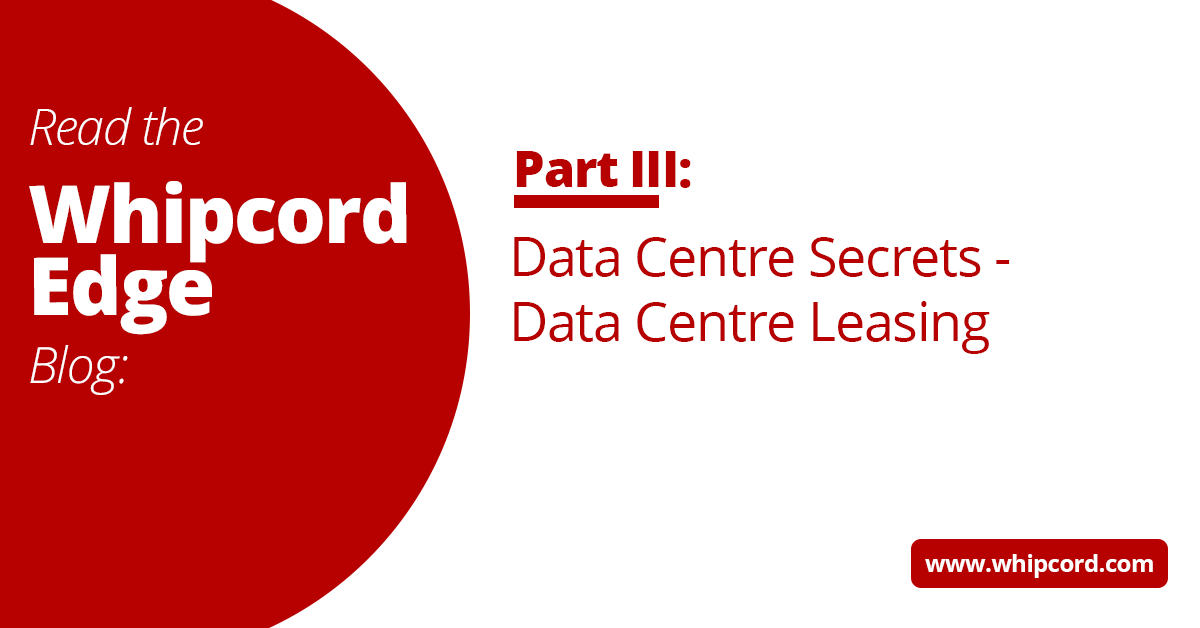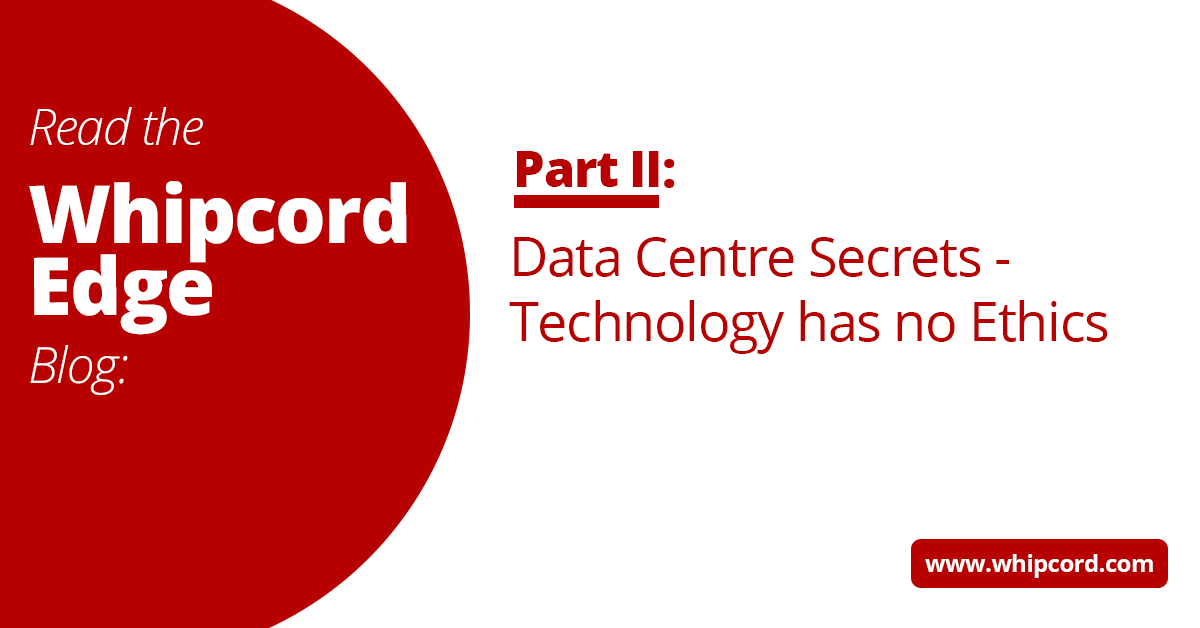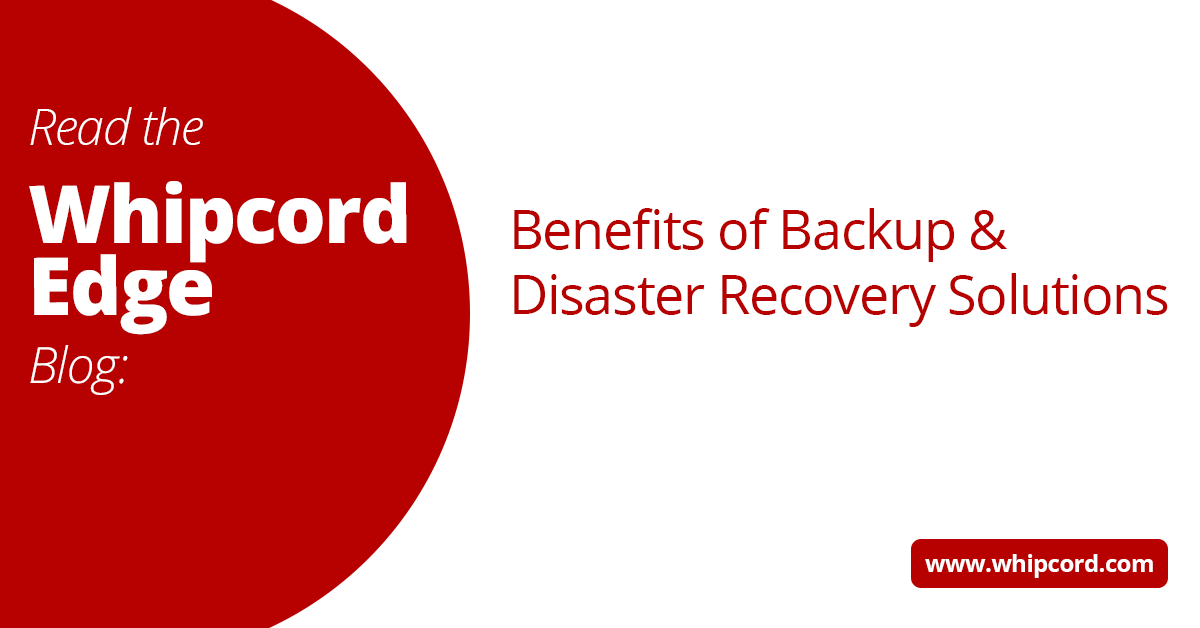Editors Note: With more companies considering "Return to Work" and potentially winding down server rooms/closets in their office, the role of leasing space or racks with a data center provider is becoming more important. We thought this overview from Darren Ghan of Data Center Legal Services would be helpful. Working with an client focused team like Whipcord Edge can cut through the red tape and get your systems running quickly with less headaches.
Leasing space in a data centre is much different from leasing office space due to the highly technical nature of data centres and how they are used.
The intent of this article is to highlight some of the important items that you (as Leasee) should include in your lease with a data centre partner. Please note, this article is by no means a complete listing of technical issues, and does not address the regular, non-data centre specific aspects of a lease. For your free “Data Center Heads of Terms” that can be used as a guide to negotiate your data centre space lease, please contact the author at dghan@datacenterlaws.com.
1. Base Rent. Ensure your ‘Base Rent’ does not include electrical power. As is discussed below in this blog, power should be separately metered and charged according to actual usage. You should also consider access to a loading bay for the delivery/off-loading of equipment along with a dedicated and secure storage area and a guarantee that Landlord staff will be available to receive shipments.
2. Telco Requirements. The data centre should be operated on a ‘carrier neutral’ basis so that there is no restriction on the carriers allowed into the data centre. Additionally, the lease should permit you, or your chosen carriers, to run circuits and cross connects into and throughout both the data centre and your leased space at no cost and/or allow you to hire the Landlord to do it for you at reasonable market rates (subject to agreed discounts for bulk purchases). Telco providers should enter the data centre via two separate, diverse routes and should enter the data centre with mechanical protection and any pits within the data centre should have adequate means of drainage installed. The Meet-Me Room(s) should have dedicated protected conduit to your leased space.
3. Acceptance Testing. Due to the highly technical nature of data centres, you should have the right to perform acceptance testing of your leased space once you provide the Landlord with your test plan.
4. Alterations. Ensure you have the right to perform non-structural alterations without having to first get your landlord’s approval. The lease should specifically state that the bolting of racks to the slab floor are not considered structural alterations and, therefore, do not need Landlord approval. Any structural alterations you wish to make will need Landlord approval, but the lease should state that such approval is not to be unreasonably withheld, conditioned, or delayed.
5. Security. Your Landlord should guarantee that all security and technical staff, present and future, shall have successfully undergone a background/security check. Also, CCTV within the data centre should monitor your leased space (raised floor, office, and storage areas) and that all recordings should be maintained for at least 90 days during which you have the right to review such recording. Other security logs, such as data centre access logs, should be kept for at least 18 months so that they are available for audit.
6. Audits. There are three types of audits:
(a) an audit/inspection that you conduct yourself.
(b) a third-party audit contracted by the Landlord, and.
(c) an audit conducted by a government authority/regulator.
We’ll address each in turn.
(a) You should have the right to audit/inspect the data centre’s mechanical and electrical infrastructure in addition to an audit/inspection of your leased space. The lease should state parameters of your audit such as the amount of audits/year and the amount of notice that you must provide the Landlord prior to conducting your audit.
(b) In addition, your landlord should be obligated to conduct annual third party audits (e.g. SOC2 ...) of the data centre’s mechanical and electrical infrastructure and their related operational policies/procedures during each year of your term and provide you with a complete copy of the audit report. If these reports reveal any deficiencies, the Landlord must remedy the deficiencies within a timeline agreed to between you and the Landlord, although the lease must state a maximum timeline. If the deficiency is not remedied, you should have the option of terminating the lease.
(c) If you are subject to audits by governmental authority/regulator, the lease must obligate the Landlord to cooperate by allowing an inspection of the data centre, providing all audit reports, and allowing the governmental authority/regulator to interview the Landlord’s personnel.
7. Power. Ensure the lease guarantees you a minimum amount of power along with an option for you to increase the maximum power to a specified amount. Regardless of the maximum power you are entitled to, the lease should require the installation of meters so that you are only charged for the actual cost of the electricity you use.8. Service Level Agreements (“SLA”). Each service provided by the Landlord should have an associated SLA, such as SLAs for Power, Temperature, Humidity, and other contemplated services. Each SLA should have an associated credit in the event the SLA is breached. In addition, the lease should contain a definition of “Chronic Outage” which, if exceeded by the Landlord, will give you the option to terminate the lease (with the usual associated transition obligations from the Landlord).
9.Building Management System (“BMS”).Your landlord should provide you with monthly reports from the BMS for factors such as your power use and the temperature and relative humidity in your leased space.
10. Planned Maintenance. Your landlord should provide to you in each year throughout the term of your lease a copy of their planned preventative maintenance schedule for critical components of the data centre such as CRAC Units, Temperature Sensors, UPS/Generator Systems, VESDA, Leak Detection, Humidity Sensors, Gas Suppression Discharge, etc.…
This article is for educational purposes only. Reprinted here with permission
-1.png?width=1092&height=792&name=logo%20(1092x792)-1.png)
%20copy(black%20letters).png?width=1092&height=792&name=logo%20(1092x792)%20copy(black%20letters).png)




.png?width=100&height=91&name=white%20logo%20(100x91).png)